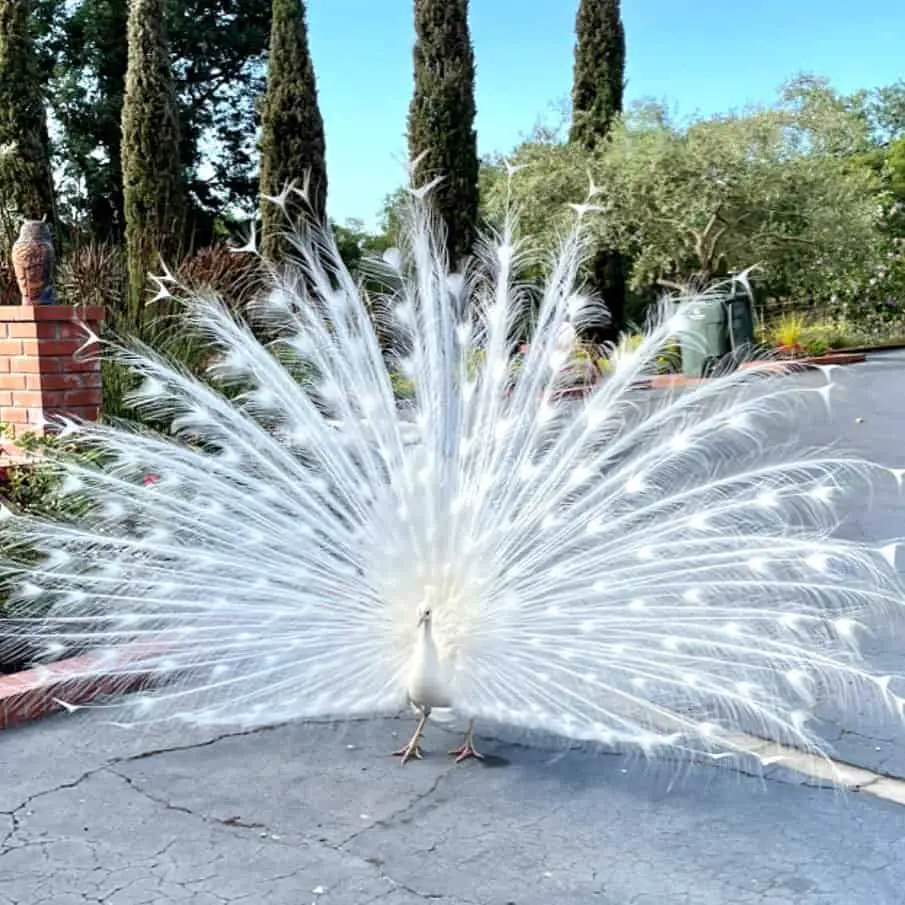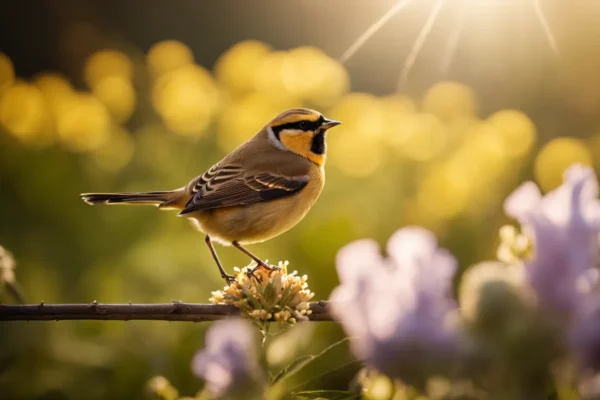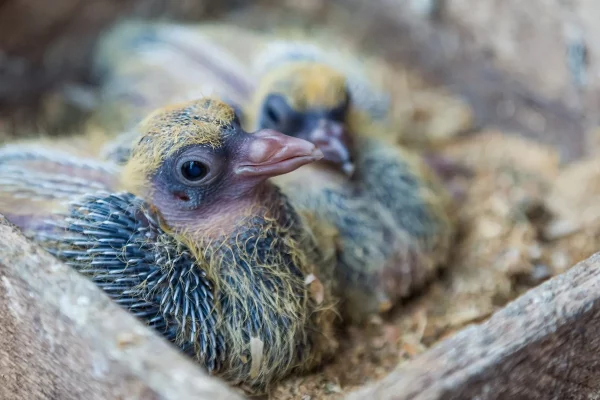White peacocks are without a doubt among the most beautiful animals on the earth. Their tails, which resemble fans, are as magnificent as their snow-white feathers.
Furthermore, these birds with white pigmentation are symbolic of many different civilizations worldwide. This is hardly surprising considering that people have been using them in a variety of ways for generations.
Everything you need to know about white peacocks will be thoroughly addressed in this post. You will discover a great deal about their genetics, breeding practices, environment, and origins. Come on, let’s get going!
What Is a White Peacock?
Because of a rare genetic abnormality that leaves their plumage colorless, white peacocks are basically male peafowls, since females are referred to as peahens. They stem from diseases like as albinism or, more often, leucism.
As surprising as it may seem, the Indian blue peafowl—India’s national bird—is really the parent species of the white peacock and peahen.
All that’s happening is that a defective gene has changed the color of their feathers, which limits how well their bodies can generate melanin.
This sort of peacock looks white or piebald, in contrast to the naturally colorful ones you may be accustomed with.
White peacocks lack pigmentation, yet they nonetheless have beautiful tail feathers and a crown-like crest on top of their heads, exactly like their blue-colored counterparts.
Do Albino White Peacocks Exist?
A white peacock’s presence might mislead many people into believing they are seeing an albino peacock. Keep in mind, too, that not every white peacock is albino; some are classified as leucistic birds.
The color of their feathers essentially makes a difference.
More precisely, the whole white hue of albino peacocks is due to their total absence of melanin. They also often have noticeable pink or red eyes.
Leucism-affected peacocks, or pied peacocks, on the other hand, only experience a partial loss of pigmentation. Moreover, these birds are distinguished from their albino counterparts by having brown eyes.
However, take note that while both illnesses cause iridescent feathers to fall off, leucism is the one that often affects peafowls. Additionally, since albino peacocks are more vulnerable to predators, they would be harder to discover.

Ten Fascinating Realities About White Peacocks
Every peahen and every peacock is revered as gorgeous. But the ones that leave the most impact are often white peacocks.
Here are some fascinating facts about white peafowls:
1. There is no distinct species of white peacock.
White peacocks, sometimes known as peahens, are not separate species. The Indian blue peafowl, which is indigenous to Southeast Asia, including Sri Lanka and the Congo Basin, is the source of the mutation that causes it.
According to historical accounts, the first white peafowls were discovered in the 1830s.
2. The white peacock is associated with several metaphorical meanings.
A white peacock is a symbol of immortality and nirvana, a fortunate charm
A prominent figure in religious and cultural stories, the white peacock dons a variety of symbolic headgear. Some of its most typical meanings are as follows:
The Buddhist concept of nirvana is a transcendent state devoid of pain, which is symbolized by a white peacock.
Charms of good fortune: Hindus believe that white peacocks and peaheans are symbols of prosperity and good fortune.
Immortality: In ancient Greece, white peafowls were considered a powerful emblem of immortality since it was formerly thought that these birds never wither away after death. According to legend, the feathers of the fabled Garuda bird are used to make these birds.
But remember that a white peacock is commonly regarded as a symbol of purity, elegance, and innocence, even beyond these connotations with celestial beings and otherworldly animals.
3. White peahens and peacocks are uncommon in the wild.
White peacocks are uncommon, yet they have become more common in legends and folklore. Though their unusual white hue makes them stick out, their scarcity is what makes them so desirable.
I saw firsthand how difficult it is to produce these uncommon white birds when I was employed at a bird refuge. Their primary source of breeding must be other white peacocks with the leucistic gene.
Specifically, when two carriers mated, we had a 25% probability of producing a white chick, therefore our odds were low. However, we had the good fortune to generate one in our first set of eggs.
It’s not always pure white that white peafowls are
Peahens and white peacocks aren’t usually entirely white. Those with leucism, as opposed to albinos, will yet have additional body markings, like as dark-tipped tail feathers or black shoulder patches.
A picture of a white peacock that exhibits partial leucism is shown below:
Leucism in partiality in a white peacock
As you can see, sometimes, through the white feathers of these peacocks, glimpses of the distinctive blue color of the Indian blue peafowl show.
5. Peahens and peacocks are both affected by albinism.
Albinism may afflict peacocks of any gender. Men, however, have a greater barrier to overcome.
Peahens choose their mate in the realm of peafowls, specifically. Albino peacocks are thus less attractive to prospective mates due to their total absence of melanin, which makes wooing quite challenging for them.
6. A white peahen’s and a peacock’s feathers are originally yellow.
The interesting thing about white peafowls is that they are not born white. These peahens and peacocks are indeed yellow from birth.
Keep in mind that as young chicks get older and experience a variety of color changes, they will finally become white.
7. White peafowls find it difficult to fit in with their environment.
Even though they are captivating, white peacocks are endangered animals. Especially in terms of concealment, its pale coloring is a disadvantage.
Survival in the environment requires one to blend in, and the white peacock’s incapacity to do so makes it a prime target for foxes, coyotes, tigers, and leopards, among other predators.
8. White peacocks and hens have several uses.
White peafowls are useful because they may be kept as unusual pets or used for pest management.
They are attractive additions to many gardens and estates because of their attractiveness, which also serves an ornamental purpose by deterring pests.
The standard of living for white peafowls is often poor.
When compared to peacocks with a range of colors on their plumage, all-white birds often have a lesser quality of life.
For example, impaired vision is particularly common among white peacocks and red-eyed peahens. Moreover, skin cancer might affect them since they lack melanin.
Finally, predators can clearly identify these white-pigmented birds due to their vivid coloring.
10. White peacocks do better in captivity than in the natural environment.
White peacocks are uncommon in the wild as they are mostly kept in captivity. They are essentially more common in zoos, sanctuaries, and other controlled ecosystems due in large part to their fragility in natural habitats.
In a similar vein, the majority of white peacocks are kept in captivity, which makes it difficult to estimate the precise number of their population. Still, some believe that there are thousands of these birds still in the world today.
Frequently Requested Questions
What Name Is Given to a White Peacock?
Leucistic Indian peacock is the term most often used to describe a white peacock. This is because it is a descendent of the peafowl and the Indian blue peacock.
Nevertheless, keep in mind that a peacock would be referred to as an albino Indian peacock if its absence of melanin is caused by the albinism chromosome, a recessive gene.
The Scarcity of a White Peacock?
With just one in 30,000 believed to have this unusual hue, white peacocks are truly quite uncommon to see. This is mostly because hereditary disorders like leucism and albinism are the only ones that cause them to appear.
However, it should be noted that while leucism in peacocks has been shown to be more common than albinism, both species are still very uncommon.
To ensure that their numbers stay stable in captivity, several zoos and breeders put up great effort to safeguard and breed them.
What Sets White Peacocks Apart?
The ordinary blue peacock has a rare and unique variation known as the white peacock. Their unusual coloring further sets them apart; they are native to areas such as Southeast Asia.
How Much Does a Peacock Cost in Albino?
Generally speaking, an albino peacock costs between $300 and $1,000. This is indicative of its rarity in relation to other peacock hues.
Having said that, bear in mind that albino peacocks are more likely than regular peafowls to have health problems, such as impaired vision and a tendency toward skin cancer, before you actually purchase one.
What’s Symbolic of a White Peacock?
White peacocks are very symbolic, especially in Hindu mythology where they stand for the progression of time cycles. These magnificent birds are also said to be powerful fortunate charms.
A white peacock, however, represents purity, elegance, immortality, enlightenment, and serenity, regardless of its cultural connotations.
With any luck, you now have all the information you want about white peafowls from this page. Kindly let us know in the comments if you have ever spotted a white peacock or peahen!






